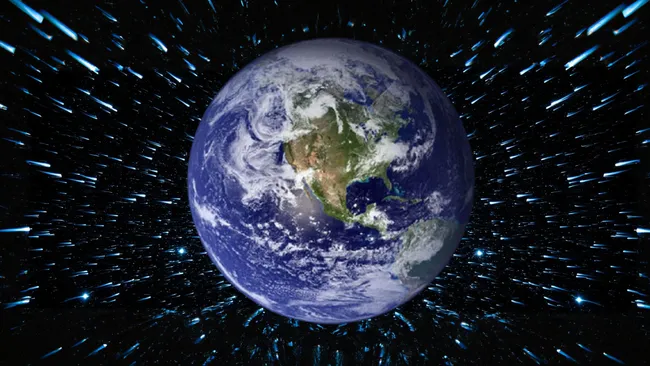In the past, Earth probably had rings like Saturn
- September 17, 2024
- 0
The four giant planets in the Solar System have rings: Saturn, Jupiter, Uranus and Neptune. New data from Australian scientists has shown that rings also exist on Earth.
The four giant planets in the Solar System have rings: Saturn, Jupiter, Uranus and Neptune. New data from Australian scientists has shown that rings also exist on Earth.

The four giant planets in the Solar System have rings: Saturn, Jupiter, Uranus and Neptune. New data from Australian scientists has shown that rings also exist on Earth. They have remained stable for millions of years and could eventually have disastrous consequences for all living things.
Scientists first seriously talked about hypothetical rings around the Earth in the second half of the 20th century. In 1980, in the journal Nature An article by American astronomer John O’Keefe (John O’Keefe) proposed that 34 million years ago, Earth had its own ring system in the equatorial plane of the planet, like Saturn.
This ring system remained stable for several million years and even influenced weather patterns. In the paper, O’Keefe wrote that the shadowing of the Earth by the rings may have led to global cooling, which scientists have linked to the extinction of many species of marine organisms in the late Eocene.
A team of Australian scientists from Monash University have come up with a new hypothesis about our planet’s ring system. They say the rings around it may have formed around 466 million years ago, at the start of an extremely intense meteor bombardment during the Ordovician period (which lasted from 485.4 to 443.8 million years ago).
The scientists’ conclusions are based on plate tectonic reconstructions for the Ordovician period, which show the locations of 21 craters resulting from asteroid impacts. The results of the research were published in the journal Earth and Planetary Science Letters.
It was initially believed that 466 million years ago, Earth was bombarded by 150-kilometer-long pieces of chondrite that crashed into the asteroid belt. A team of scientists mapped the locations of 21 known craters from this era and used models of the movement of tectonic plates to track where they formed immediately after the debris fell.
Modeling showed that all of these craters were within 30 degrees of the equator at the time of formation. If our planet were truly bombarded with debris from the asteroid belt, the craters would be scattered randomly across the surface.
What could have caused the formation of craters concentrated near the equator? The authors of the scientific study concluded: this is an asteroid captured by the gravity of our planet.
When the asteroid crossed the Roche limit, it broke up under the influence of the tidal effects of the Moon and the Sun, forming rings (or a single ring) of fragments located in the equatorial plane of the planet, like Saturn. Over tens of millions of years, rock debris fell onto the planet and fell near the equator, forming craters.
If the Earth did indeed have a ring system, it could also affect the planet’s climate: due to the Earth’s tilt relative to the Sun, the rings around the equator cast shadows on the surface and block sunlight, causing a decrease in temperature and global cooling. This period in history is known as the Ordovician-Silurian glaciation. 20 million years after the beginning, the Earth experienced another mass extinction.
According to the authors of the new study, rings are a necessary phase that Earth and other planets in the Solar System have gone through several times throughout their existence. Australian scientists plan to model in the near future how asteroids break up to form rings and how these rings evolve over time. The researchers will then use a computer to try to determine the effect of the rings on the climate.
Source: Port Altele
As an experienced journalist and author, Mary has been reporting on the latest news and trends for over 5 years. With a passion for uncovering the stories behind the headlines, Mary has earned a reputation as a trusted voice in the world of journalism. Her writing style is insightful, engaging and thought-provoking, as she takes a deep dive into the most pressing issues of our time.